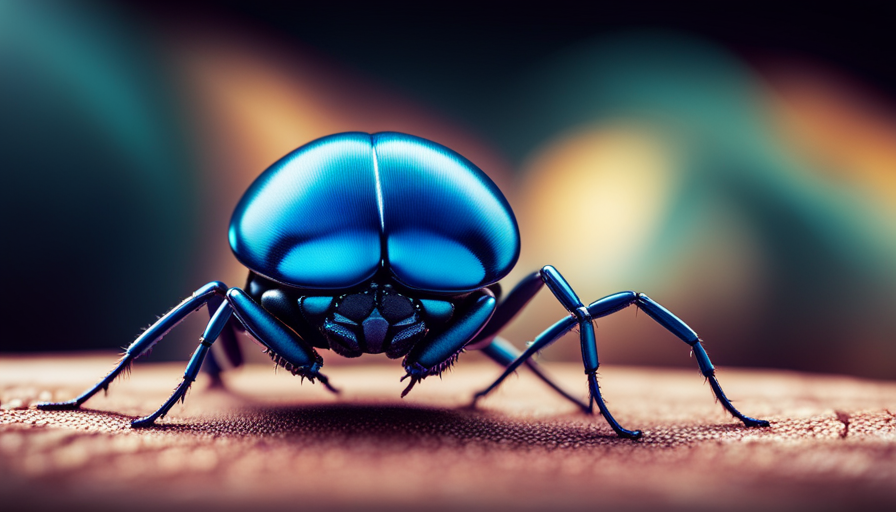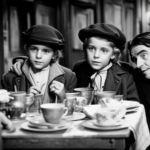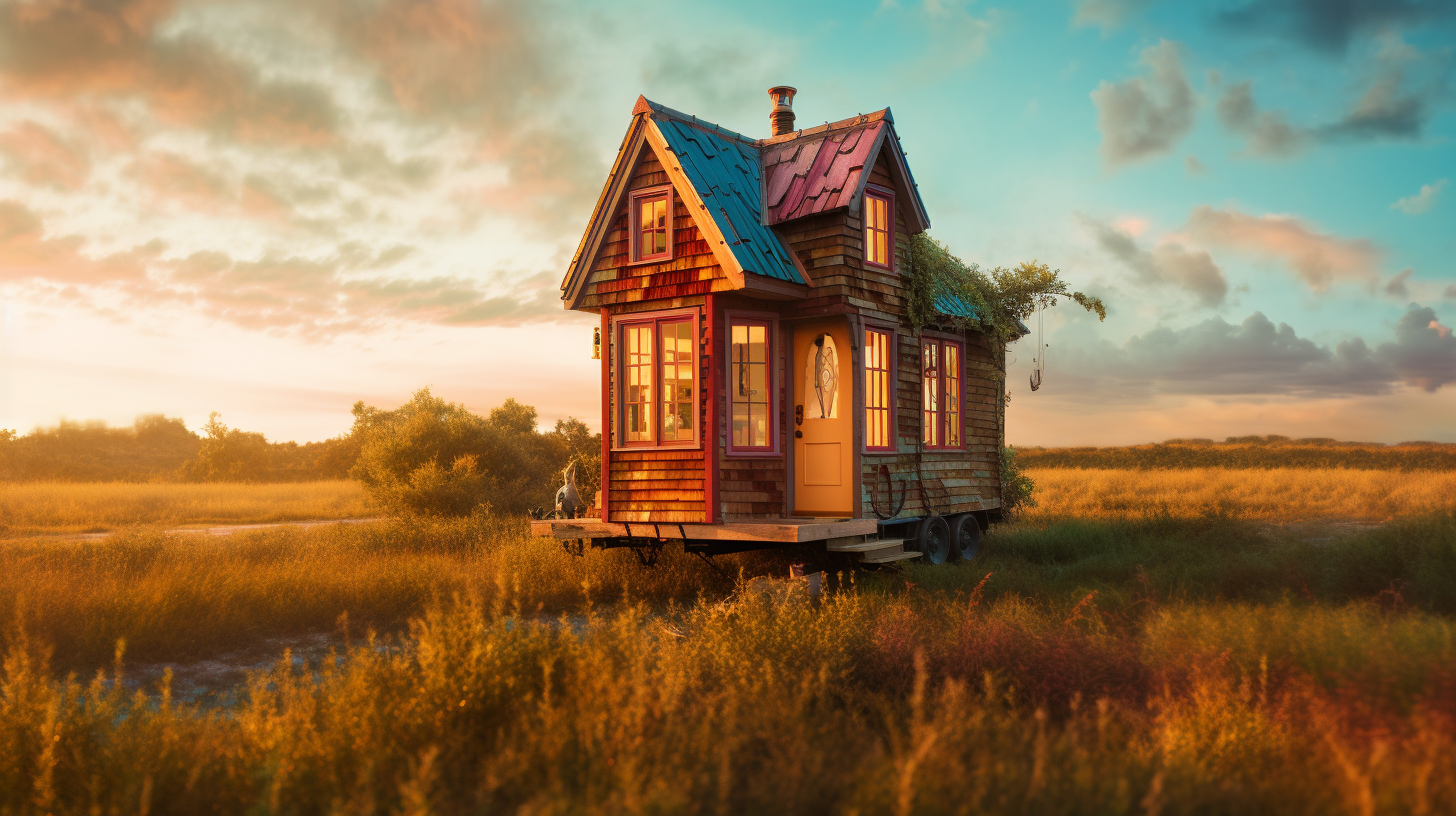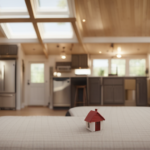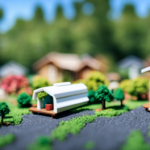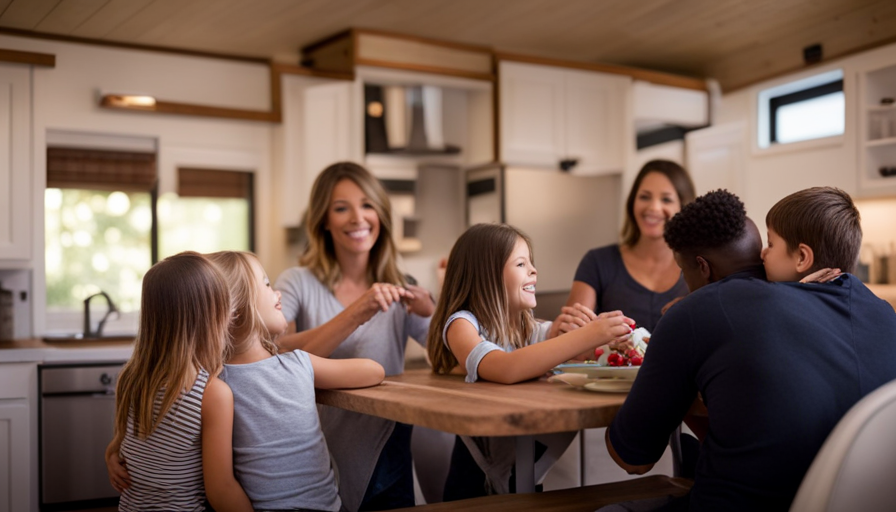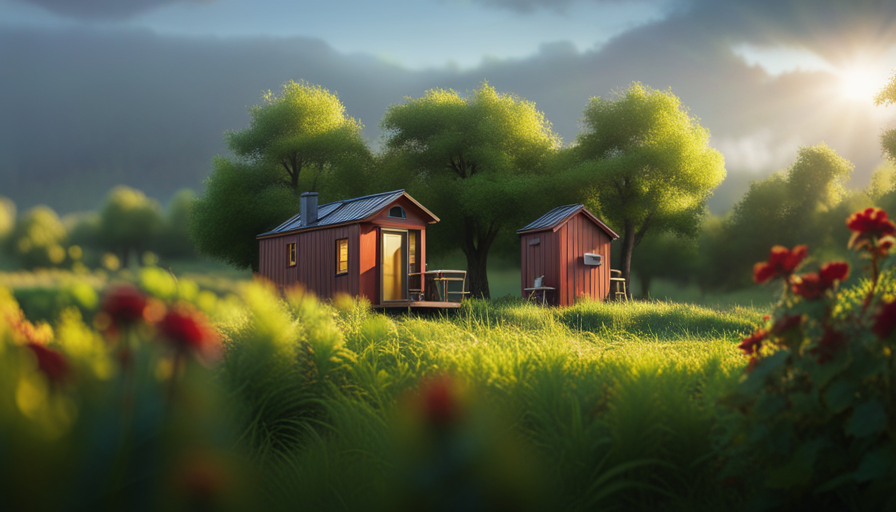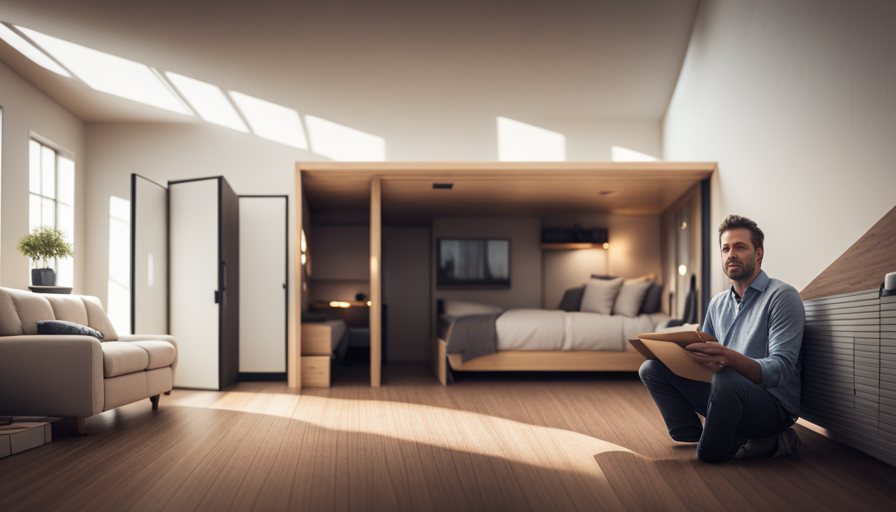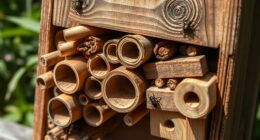Who portrayed Tiny in “House of 1000 Corpses”? This has become a hot topic among horror enthusiasts ever since Rob Zombie’s iconic film hit the screens. In this piece, I aim to unravel the enigma surrounding this character and shed light on the gifted actor responsible for bringing him to cinematic life.
With a parallelism that captivates and chills, the portrayal of Tiny in House of 1000 Corpses is a testament to the actor’s skill and dedication. From their early life and background to their career highlights and previous roles, we will uncover the journey that led them to this iconic horror role. We will also examine the casting process and the preparation it took to embody the terrifying presence of Tiny.
Join me as we explore the impact and reception of this character, the behind-the-scenes stories, and the challenges faced during filming. Lastly, we will discuss the actor’s post-House of 1000 Corpses career and the lasting legacy of Tiny in the horror genre.
Key Takeaways
- Matthew McGrory portrayed the character Tiny in House of 1000 Corpses.
- McGrory’s unique physical appearance, standing over seven feet tall with disfigured features, added to the haunting and captivating portrayal of Tiny.
- The character Tiny challenged traditional depictions of villains in horror films with his immense size and innocence, blurring the lines between good and evil.
- McGrory’s portrayal of Tiny in House of 1000 Corpses has had a profound impact on the horror genre, influencing the portrayal of villains and inspiring future filmmakers.
The Character of Tiny in House of 1000 Corpses
You won’t believe the haunting presence that Tiny brings to House of 1000 Corpses. From his towering stature to his disfigured face, Tiny’s physical appearance is truly terrifying.
Standing at over seven feet tall, his massive frame looms over the other characters, instilling fear in their hearts. His pale, scarred skin and bulging eyes only add to his menacing aura.
Despite his intimidating appearance, Tiny forms unique relationships with the other characters in the film. He’s fiercely loyal to his family, often acting as a protector and enforcer. However, he also displays moments of vulnerability and tenderness, particularly towards the character of Baby. This complex dynamic adds depth to his character and creates a sense of empathy for him.
Moving on to the early life and background of the actor who played Tiny, it’s interesting to explore the origins of this talented performer.
Early Life and Background of the Actor
Get ready to be blown away by the astonishingly fascinating and larger-than-life actor who brought the character of Tiny from House of 1000 Corpses to life! The actor who portrayed Tiny is Matthew McGrory, a talented individual with a unique background. Born on May 17, 1973, in West Chester, Pennsylvania, McGrory had a condition called acromegaly, which caused him to grow to an extraordinary height of 7 feet 6 inches. This distinctive physical attribute played a significant role in his acting career, landing him roles in various movies and TV shows. Despite his towering presence, McGrory had a gentle and kind demeanor, which made him perfect for the role of Tiny. His early acting roles included appearances in movies like "Bubble Boy" and "Big Fish," showcasing his versatility as an actor. Outside of his career, McGrory enjoyed a quiet personal life, rarely in the spotlight. Transitioning into the subsequent section about career highlights and previous roles, McGrory’s portrayal of Tiny in House of 1000 Corpses was just the beginning of his successful acting journey.
Career Highlights and Previous Roles
Matthew McGrory had a fascinating career as an actor, showcasing his versatility in memorable roles. He appeared in movies like ‘Bubble Boy’ and ‘Big Fish,’ demonstrating his ability to fully immerse himself in diverse characters. McGrory’s notable performances include a role as a gentle giant in ‘Bubble Boy,’ where he brought a unique charm and vulnerability. In ‘Big Fish,’ he portrayed a circus giant with a captivating presence, adding depth to the film’s fantastical world. His towering height also made him stand out in various other roles, solidifying his reputation as a talented performer. Transitioning into the subsequent section about casting and preparation for ‘House of 1000 Corpses,’ McGrory’s previous experience and range made him a fitting choice for the role.
Casting and Preparation for House of 1000 Corpses
With his previous experience and unique presence, McGrory’s casting in ‘House of 1000 Corpses’ was a perfect fit, as his preparation for the role involved immersing himself in the dark and twisted world of the film. The casting process for the character of Tiny was meticulous, with director Rob Zombie wanting to find an actor who could bring both physicality and vulnerability to the role. McGrory’s towering height and commanding presence made him an ideal choice. To develop the character of Tiny, McGrory worked closely with Zombie to understand the intricate details of the character’s backstory and motivations. Through extensive research and rehearsal, McGrory was able to fully embody the unsettling nature of Tiny. This preparation allowed him to bring Tiny to life on the big screen in a way that was both haunting and captivating. As the subsequent section will explore, McGrory’s portrayal of Tiny was truly unforgettable.
Bringing Tiny to Life on the Big Screen
Step into the dark world of ‘House of 1000 Corpses’ and witness the eerie transformation of Tiny as he comes to life on the big screen, captivating audiences with his haunting presence and chilling portrayal.
Bringing Tiny to life was no easy feat, as the character required careful attention to detail in order to accurately capture his unique physicality and personality. The actor chosen for the role, Matthew McGrory, skillfully portrayed Tiny’s larger-than-life nature, using his towering height and deep, menacing voice to create a truly unforgettable character.
McGrory’s dedication to embodying Tiny’s essence allowed him to seamlessly blend into the twisted world of the Firefly family, bringing an authenticity to his performance that left audiences both terrified and fascinated. With Tiny’s introduction, the impact and reception of the character reached new heights, solidifying his place as a horror icon.
Impact and Reception of the Character
After exploring the process of bringing Tiny to life on the big screen, it’s essential to examine the impact and reception of the character.
Tiny’s presence in House of 1000 Corpses undoubtedly left a lasting impression on horror fans. With his imposing stature, hauntingly stoic demeanor, and unforgettable mask, Tiny became an iconic figure in the genre. Horror enthusiasts were captivated by his enigmatic nature and the unsettling aura he brought to the film.
Additionally, critics praised the portrayal of Tiny, recognizing the skillful performance and the character’s ability to elicit fear and tension. The character’s unique design and the actor’s dedication to the role were key factors in the positive response.
As we delve into the behind-the-scenes stories and challenges faced during the production, it becomes evident how Tiny’s presence was crucial in shaping the overall narrative of House of 1000 Corpses.
Behind-the-Scenes Stories and Challenges
During the production, you’ll encounter fascinating behind-the-scenes stories and overcome various challenges in bringing Tiny to life in House of 1000 Corpses.
Behind the scenes secrets reveal that the actor who played Tiny, Matthew McGrory, had to undergo extensive makeup and prosthetics to transform into the character. The process was time-consuming and physically demanding, requiring hours of preparation each day before filming could begin.
Additionally, McGrory faced unique challenges in portraying Tiny, such as navigating the set and performing stunts while wearing his bulky costume. Despite these obstacles, McGrory’s dedication and commitment to the role paid off, as his portrayal of Tiny became one of the most memorable aspects of the film.
Transitioning into his post-House of 1000 Corpses career, McGrory continued to showcase his talent in various film and television projects.
Post-House of 1000 Corpses Career
Following his role in House of 1000 Corpses, Matthew McGrory’s career flourished as he showcased his talent in a diverse range of film and television projects. Despite his iconic portrayal of Tiny, McGrory was determined to prove his versatility as an actor.
He appeared in films such as Big Fish, The Devil’s Rejects, and Bubble Boy, each time delivering memorable performances that showcased his range and dedication to his craft.
In addition to his film work, McGrory also made guest appearances on popular television shows like Malcolm in the Middle and Charmed. His unique physical appearance and ability to bring depth to his characters made him a sought-after talent in the industry.
As we delve into the legacy of Tiny in the horror genre, it becomes evident that McGrory’s post House of 1000 Corpses projects played a significant role in solidifying his place as a respected actor in both the horror and mainstream entertainment worlds.
Legacy of Tiny in the Horror Genre
Despite his towering presence and chilling portrayal, Matthew McGrory’s character in House of 1000 Corpses left an indelible mark on the horror genre, becoming a haunting figure that continues to lurk in the shadows of our nightmares. Here are four ways in which Tiny’s legacy has influenced the horror genre:
-
Influence on horror villains: Tiny’s character challenged the traditional depiction of villains in horror films. With his immense size and childlike innocence, he blurred the lines between good and evil, creating a new type of antagonist that audiences hadn’t seen before.
-
Evolution of the ‘gentle giant’ archetype: Tiny’s portrayal paved the way for the evolution of the ‘gentle giant’ archetype in horror. He showed that a character can be physically imposing yet possess a gentle and compassionate nature, adding complexity to the portrayal of monstrous figures in the genre.
-
Psychological impact on viewers: Tiny’s presence on screen evokes a primal fear in viewers. His physicality and disturbing appearance tap into our deepest fears, leaving a lasting impression that lingers long after the credits roll.
-
Inspiration for future horror filmmakers: Tiny’s character has served as inspiration for aspiring horror filmmakers, encouraging them to explore unconventional and multidimensional villains. His legacy continues to influence the genre, pushing boundaries and challenging traditional tropes.
Tiny’s legacy in House of 1000 Corpses has had a profound impact on the horror genre, influencing the portrayal of villains, the evolution of character archetypes, and inspiring future filmmakers to push the boundaries of the genre.
Frequently Asked Questions
How did the actor prepare for his role as Tiny in House of 1000 Corpses?
To prepare for my role as Tiny in House of 1000 Corpses, I extensively utilized method acting techniques.
I immersed myself in the mindset and physicality of the character, studying the script and analyzing Tiny’s motivations and emotions.
I conducted research on individuals with similar physical conditions to better understand Tiny’s unique challenges.
Additionally, I collaborated closely with the director and fellow actors to ensure an authentic portrayal of this complex character.
What were some of the challenges faced while bringing Tiny to life on the big screen?
Challenges faced during the character development of Tiny in House of 1000 Corpses included physical transformation and emotional portrayal. The role required extensive prosthetics and makeup to bring the character to life, which posed challenges for the actor.
Additionally, capturing the complex emotions and motivations of Tiny, a disturbed and unpredictable character, required careful study and understanding. Balancing the character’s dark nature with a sense of vulnerability was another challenge that had to be overcome.
Did the actor have any previous experience in the horror genre before House of 1000 Corpses?
The actor who played Tiny in House of 1000 Corpses, Matthew McGrory, had previous experience in the horror genre. He appeared in the 2003 horror film ‘Wrong Turn’ and had a role in the 2005 remake of ‘The Devil’s Rejects,’ which is a sequel to House of 1000 Corpses. McGrory’s experience in the horror genre likely helped him prepare for the unique challenges of portraying the character of Tiny on the big screen.
How has the character of Tiny been received by audiences and critics?
Tiny’s character in House of 1000 Corpses has left a lasting impact on the horror genre. Audiences and critics alike have been captivated by Tiny’s disturbing presence, with many praising his portrayal as a chilling and unforgettable antagonist.
His unique physicality and menacing demeanor have made him a standout character. One interesting statistic is that the film has gained a cult following, showcasing the enduring popularity and fascination with Tiny’s character in the horror community.
Are there any interesting behind-the-scenes stories or anecdotes about the filming of House of 1000 Corpses involving the character of Tiny?
Behind the scenes secrets reveal fascinating insights into the filming of House of 1000 Corpses and the character of Tiny.
One intriguing anecdote involves the actor’s transformation into Tiny. Through prosthetics and makeup, the actor was able to completely embody the grotesque and unsettling nature of the character.
This transformation added a chilling authenticity to the film and showcased the incredible talent and dedication of the actor.
Such behind-the-scenes stories highlight the meticulous attention to detail and creativity that went into creating the world of House of 1000 Corpses.
Conclusion
In conclusion, Tiny in House of 1000 Corpses was brought to life by actor Matthew McGrory. With his towering presence and haunting portrayal, McGrory left a lasting impact on the horror genre. Despite the challenges faced behind-the-scenes, McGrory’s commitment to the role and his undeniable talent shone through.
His legacy as Tiny will forever be remembered, solidifying his place in the pantheon of iconic horror characters. Through his performance, McGrory ignited fear and fascination, leaving audiences captivated and enthralled.
Hi, I’m Emma. I’m the Editor in Chief of Tiny House 43, a blog all about tiny houses. While tree houses are often associated with childhood, they can be the perfect adult retreat. They offer a cozy space to relax and unwind, surrounded by nature. And since they’re typically built on stilts or raised platforms, they offer stunning views that traditional homes simply can’t match. If you’re looking for a unique and romantic getaway, a tree house tiny house might just be the perfect option.

